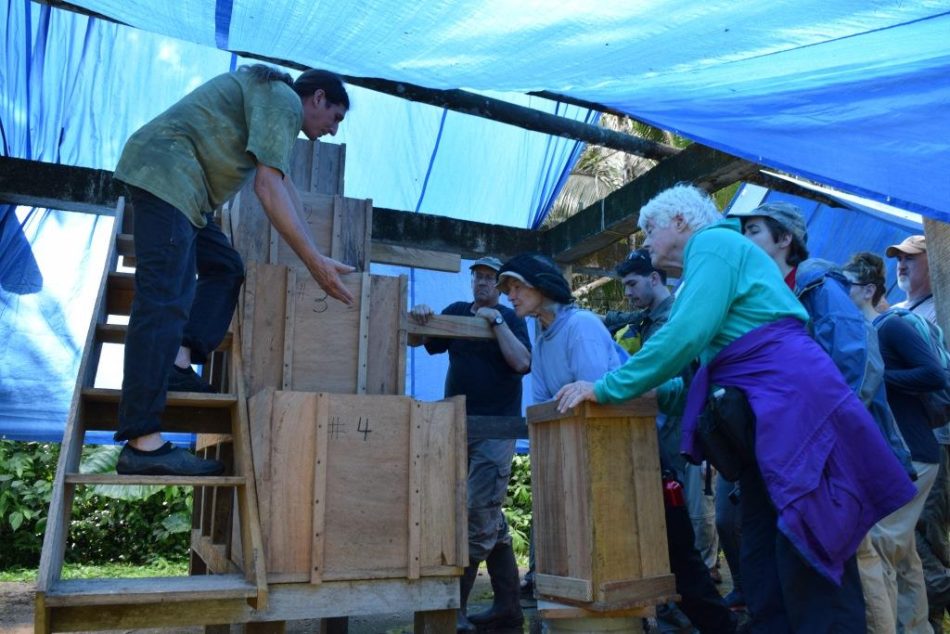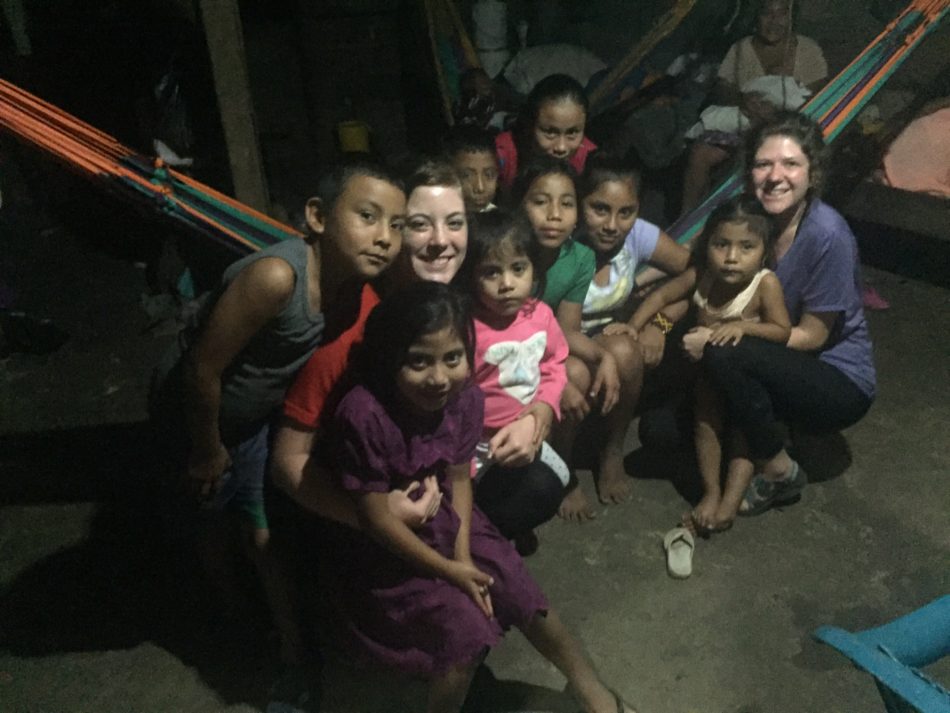Posts
The Fascinating Characteristics of Sundew
/0 Comments/in Blog, Bontany, Conservation, Education, Fellows, Research /by Mark CantiBy Mark Canti
The astonishing characteristics of sundews are unbelievable to me. During two research trips with Dr. Rob Naczi of NY Botanical Garden, I learned a lot about plants, especially sedges. I was introduced to carnivorous plants and found them fascinating. I was shocked to learn that while walking around, we have been stepping on a lot of different species of exciting plants!
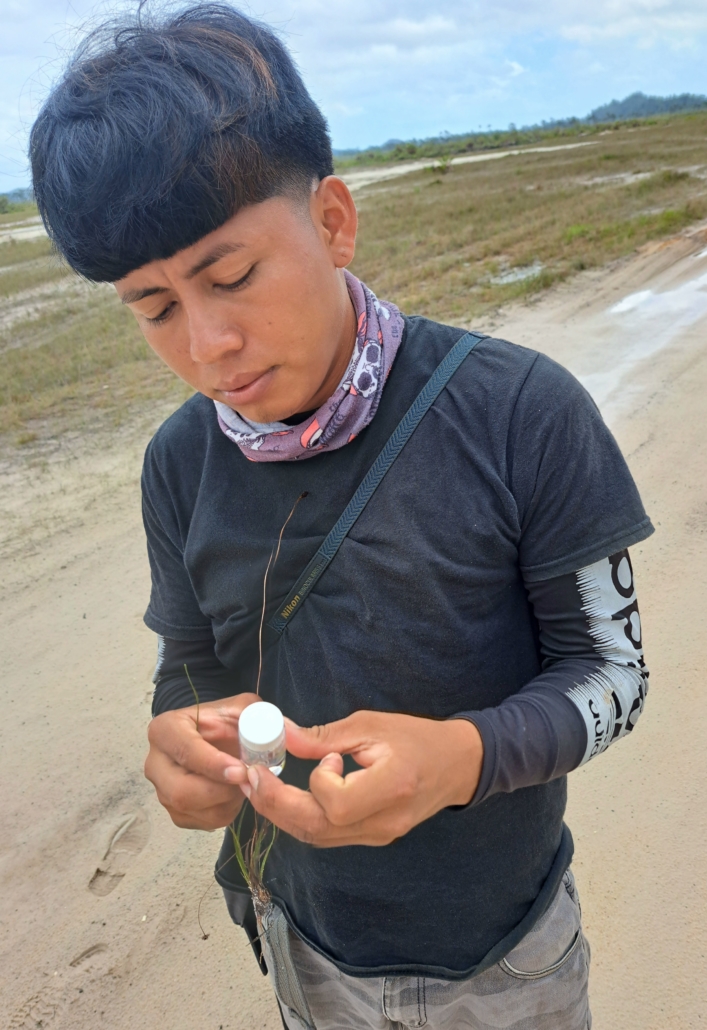
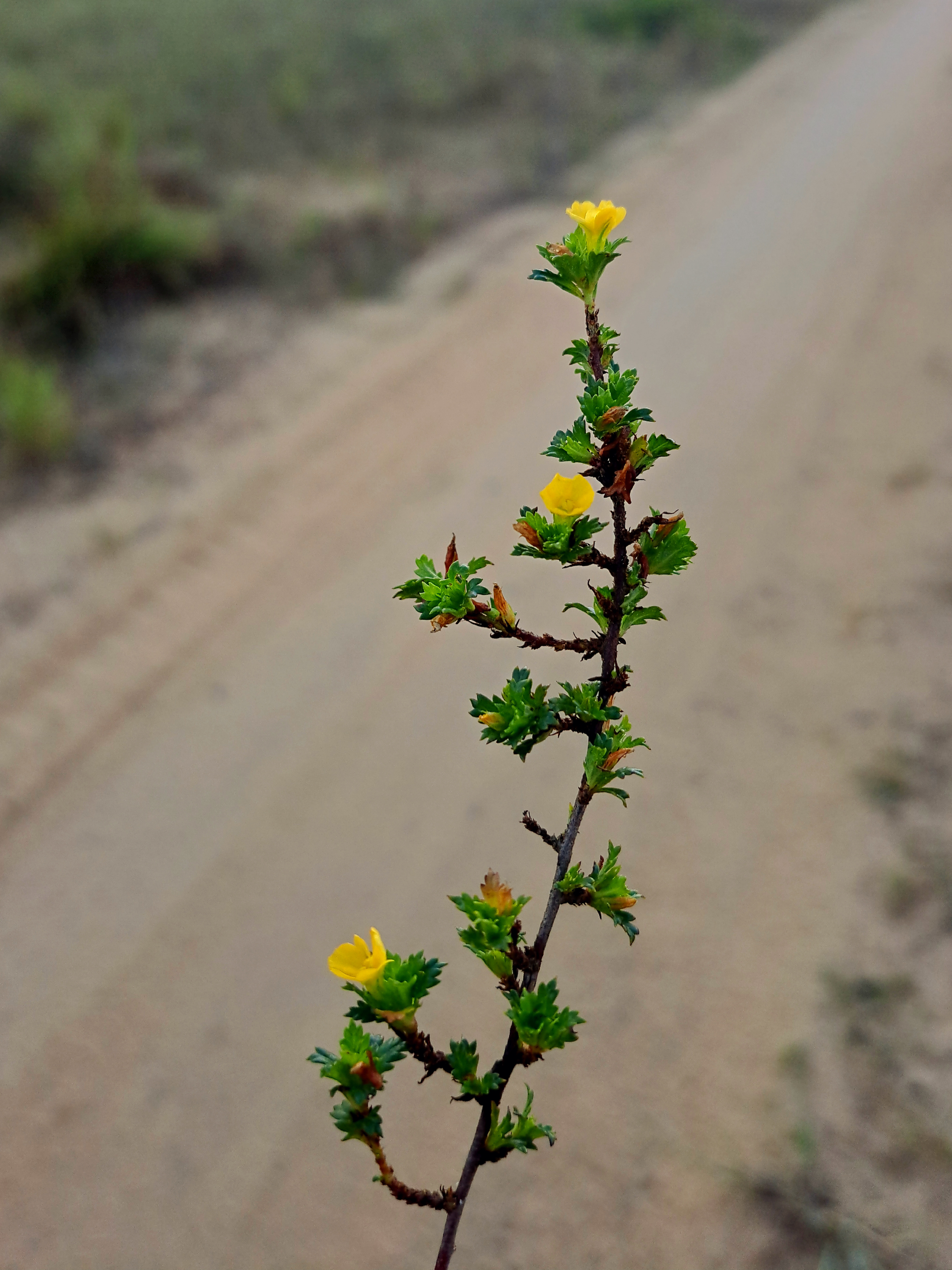
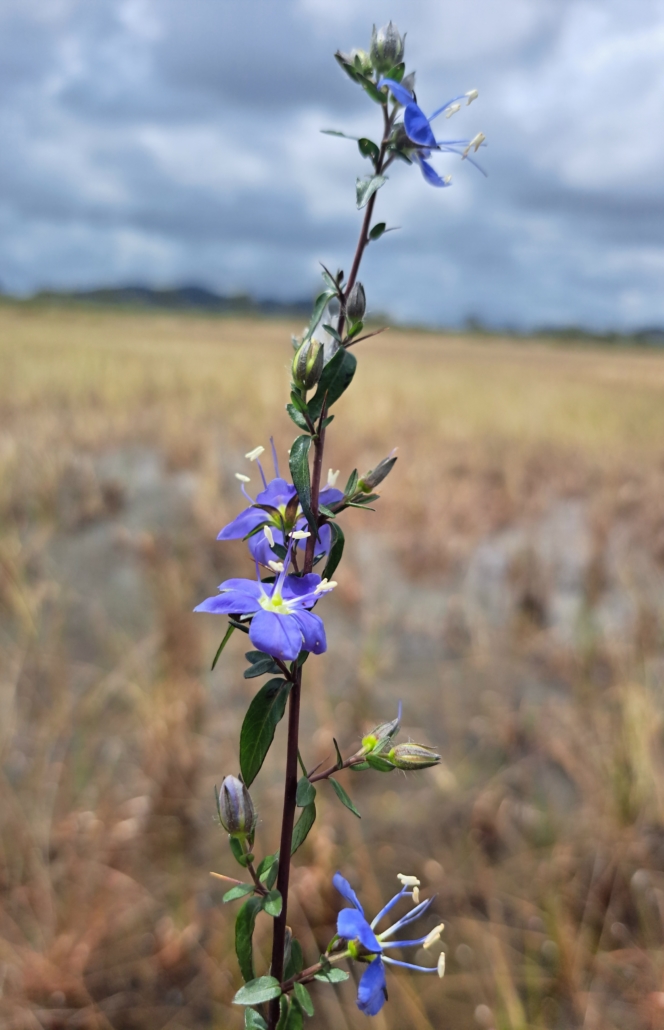
The Sundew was one of the common plants I saw in the field and it caught my attention because of the uniqueness of its survival skills. It is a variable perennial plant (meaning the plant can adapt to any environment and that the plant will grow, die out and grow again). I learned a lot of the basics of this plant in the field and, because of my interest, I continued my research after returning from my most recent research trip.
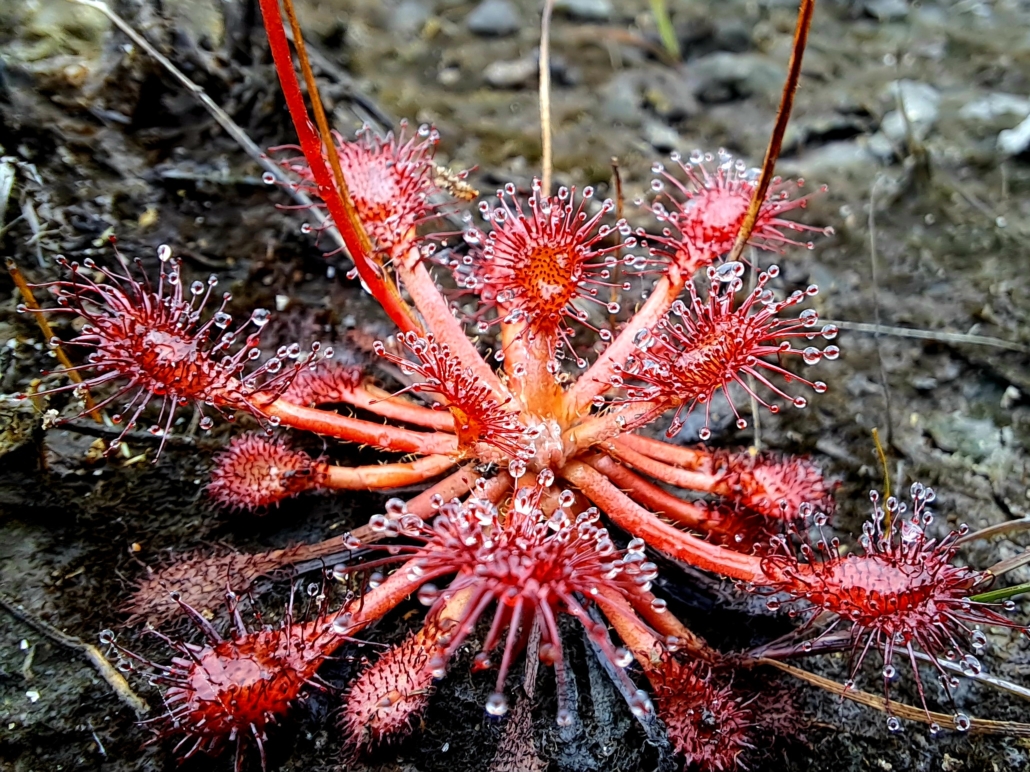
According to the International Carnivorous Plant Society, Sundews are generally about 4 cm in diameter. An individual leaf is about 5 mm long and 4 mm wide with erected scapes from the center of the plant about 8 cm long. The sepals have hairy glands that secrete sundew glue and the plant colouration ranges from pale green to deep red. It has approximately six pink or white small flowers that are constantly self-pollinating. Sundews have almost 200 different species making it one of the most diverse of all carnivorous plants.
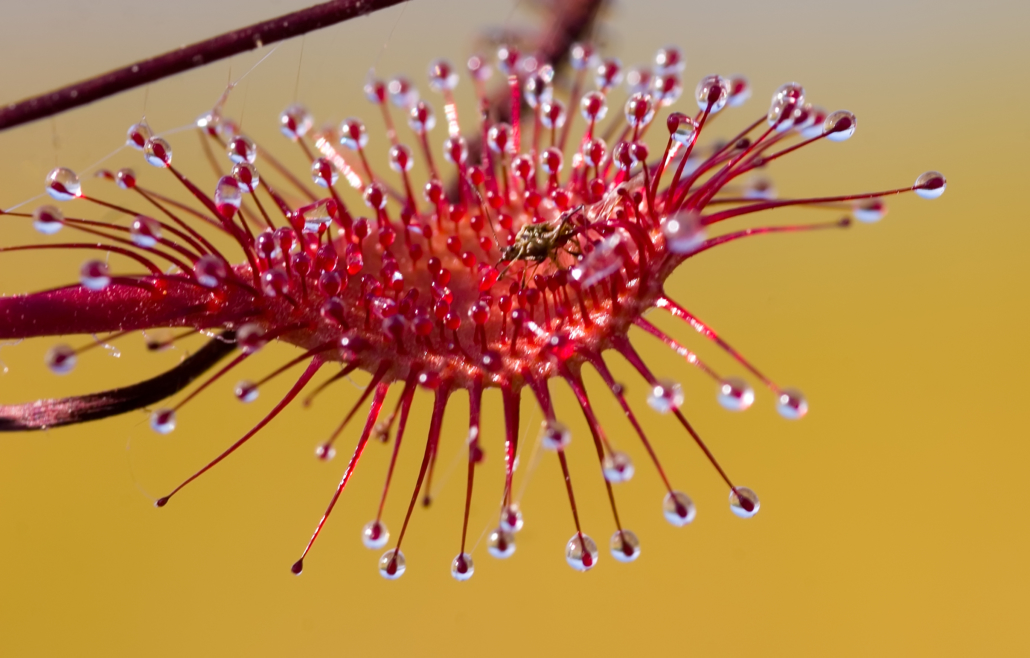
Sundews capture their prey from glistening drops of dew at the tips of the hairy-like tentacles on their leaves. A healthy plant can have a hundred dew drops which makes it look gorgeously dainty and beautiful, but it is a sticky death trap for small insects. They have the ability to move or bend their tentacles in contact to respond to their edible prey. When an insect is trapped, it either succumbs to death through exhaustion or through suffocation as the fluid from the plant releases encloses, and blocks the opening of the insect exoskeletons. Death usually occurs within 15 minutes. (Photo credit left: internet image)
Meanwhile, the plant has trapped its prey, the plant secretes enzymes that will dissolve the insects which will free the nutrients that are trapped within its body. Eventually, the nutrient mixture is then absorbed through the leaf surfaces to be used by the rest of the plant.
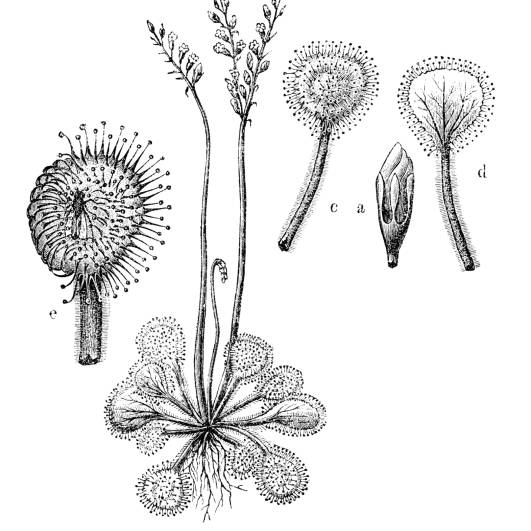
This is a plant that is common throughout the country of Belize and can be found in wet pine savannas. Discovering Sundews made me realize that many of us in Belize have no idea how extraordinary nature can be. This experience made me curious to learn about the multiple thousands of plant species that exist in this country.
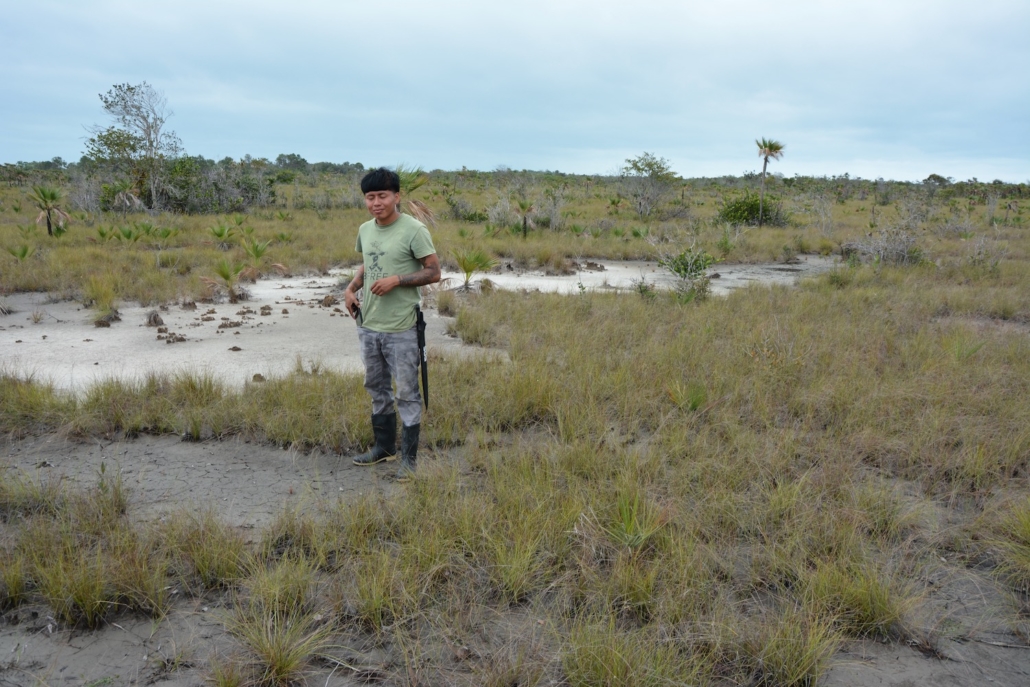
As the Cacao Fellow for BFREE’s agroforestry program, I have gained a deep appreciation and understanding of nature. As someone who loves Belize, I’m dedicated to protecting our beautiful environment by understanding and appreciating the natural world around us. This research has taught me about the significance of each organism’s existence and its essential role in maintaining the environment.
Brittnacher, J. (2017, July). Drosera spatulata Species Complex. International Carnivorous Plant Society. https://www.carnivorousplants.org/cp/taxonomy/Droseraspatulata
Collaborative Cacao Research Project
/0 Comments/in agroforestry, Blog, Cacao, Chocolate, Education, Fellows, Research, Student /by Roxanna ChenBy Roxanna Chen
BFREE in collaboration with the University of Tennessee, Knoxville (UTK) facilitated a cacao research project at the BFREE’s Field Station in May 2023. The primary objective of the collaboration was to co-design and enhance post-harvest practices and methods for Criollo Cacao which is intercropped and shade-grown in several experimental plots within the property. Criollo is a Spanish term that means “of local origin” or native. Criollo beans are usually white to pale pink in color, and it is a pure cacao variety.
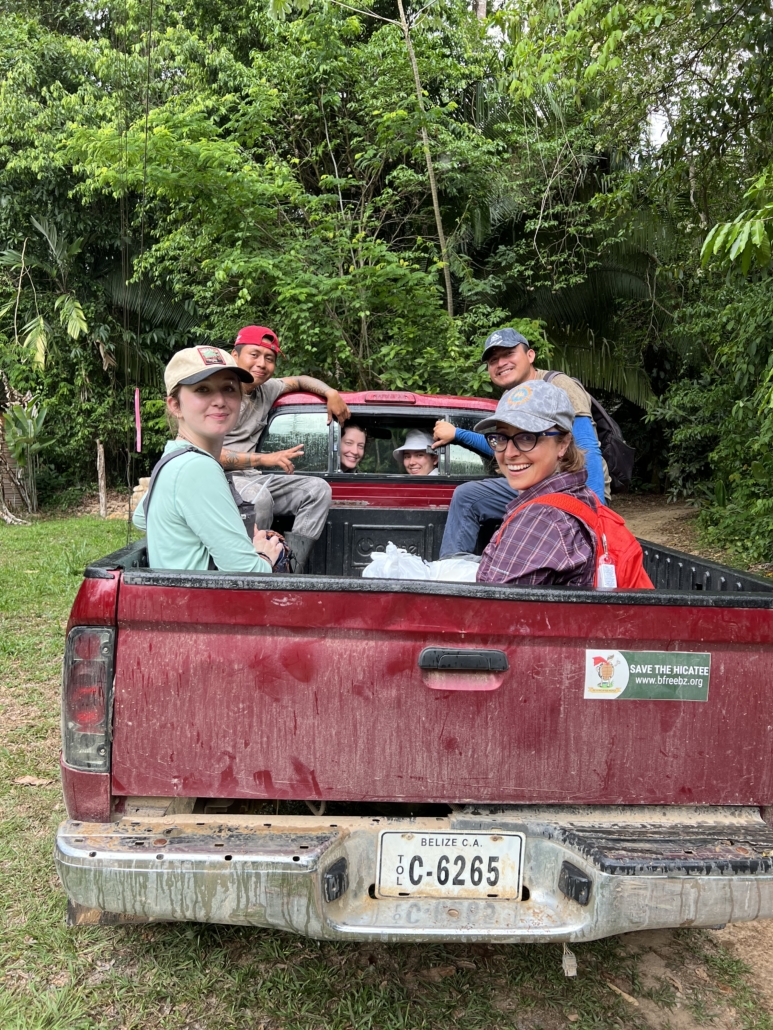
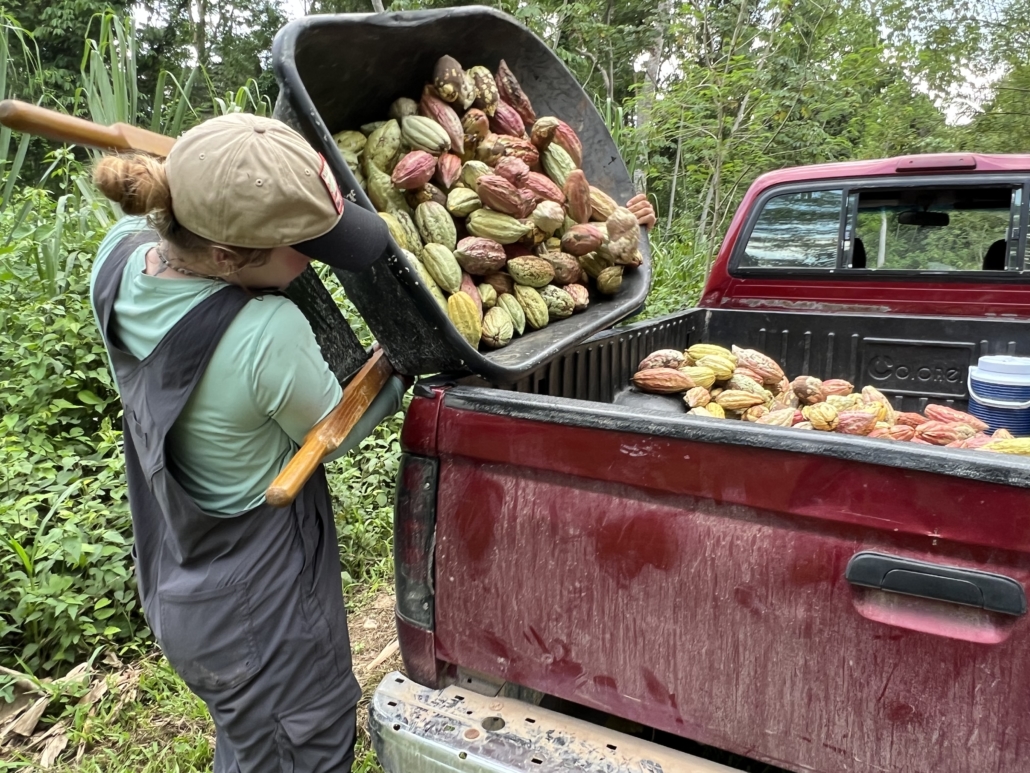
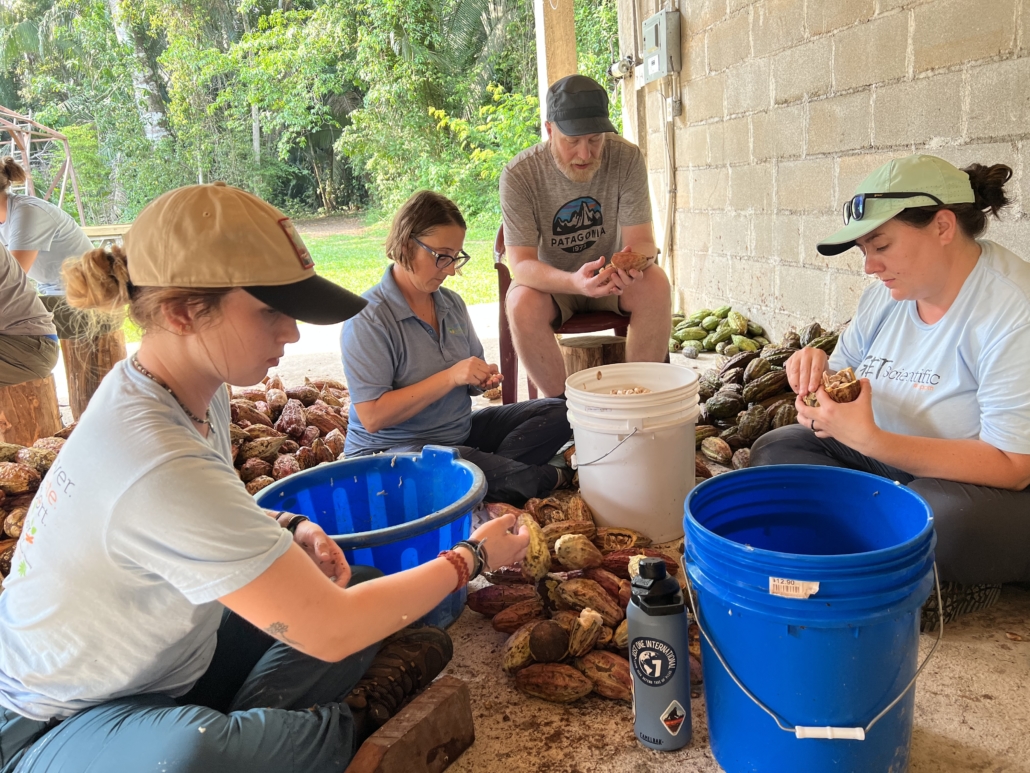
The four-day project was made feasible by several participants including the Crioco staff, myself as BFREE’s Advanced Cacao Fellow, and the University of Tennessee, Knoxville student researchers and professors. The project involved a variety of activities that ranged from harvesting ripe criollo pods to pod-cracking and bean extraction, to fermenting and data collection. The collaboration commenced with the Crioco staff playing an instrumental role in the cacao field specifically in teaching the students how to appropriately harvest pods. This activity is considered a crucial first step for good quality and fermentation because the pod must be mature, healthy, and not damaged. Good quality also means good chocolate!
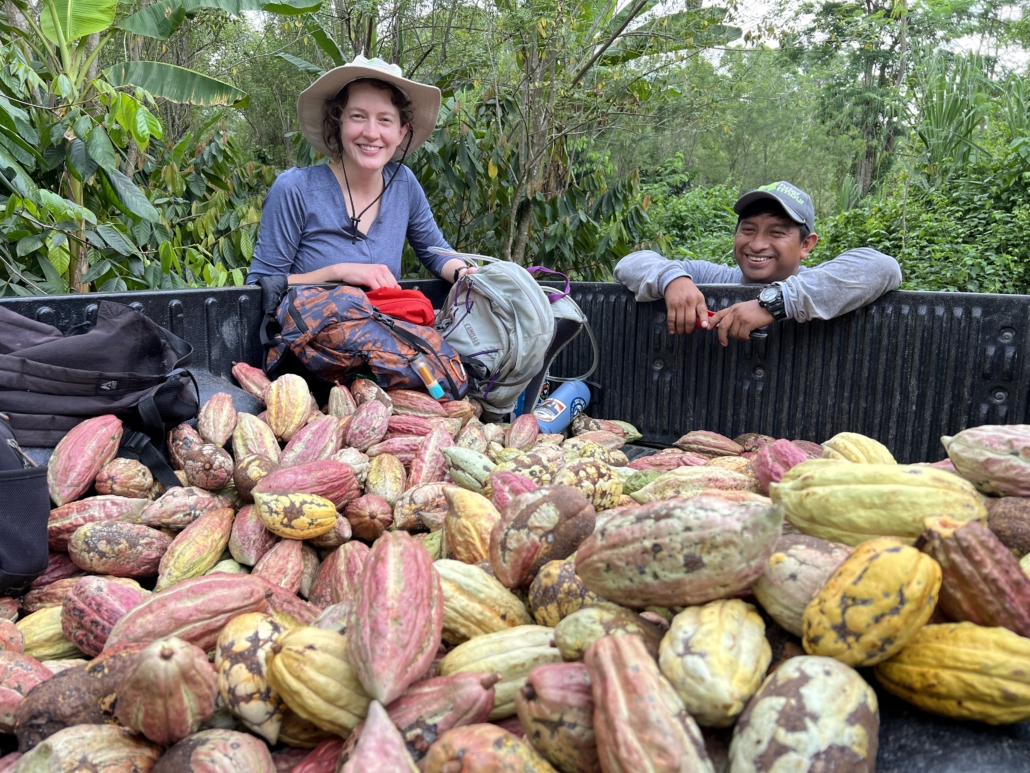
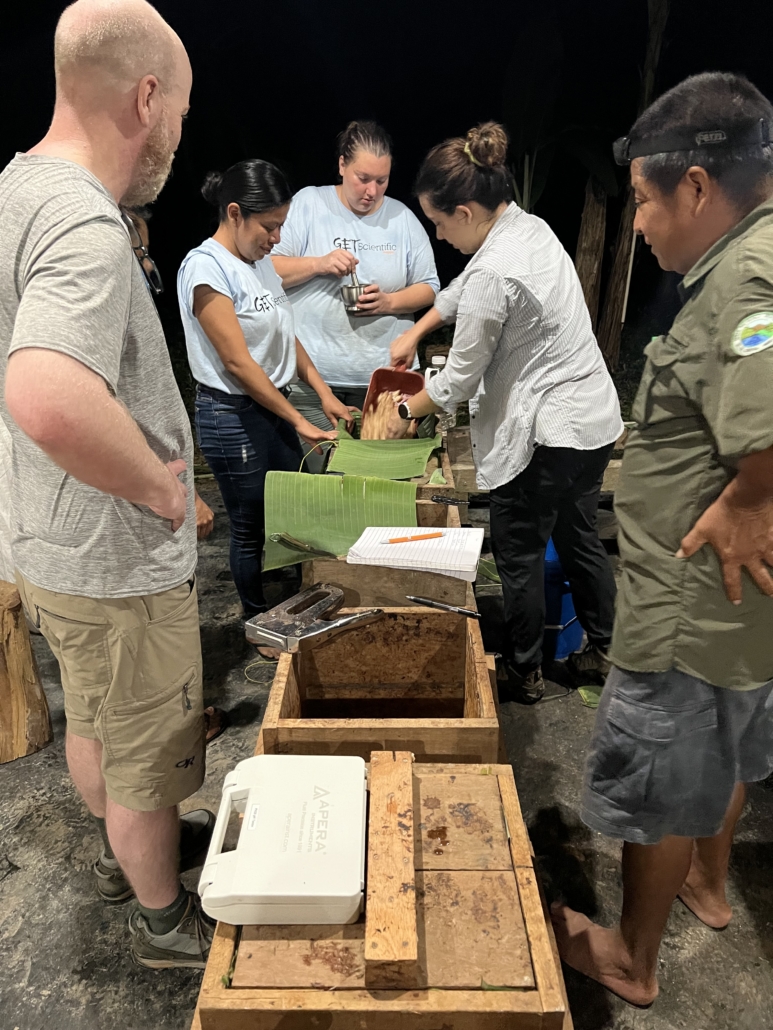
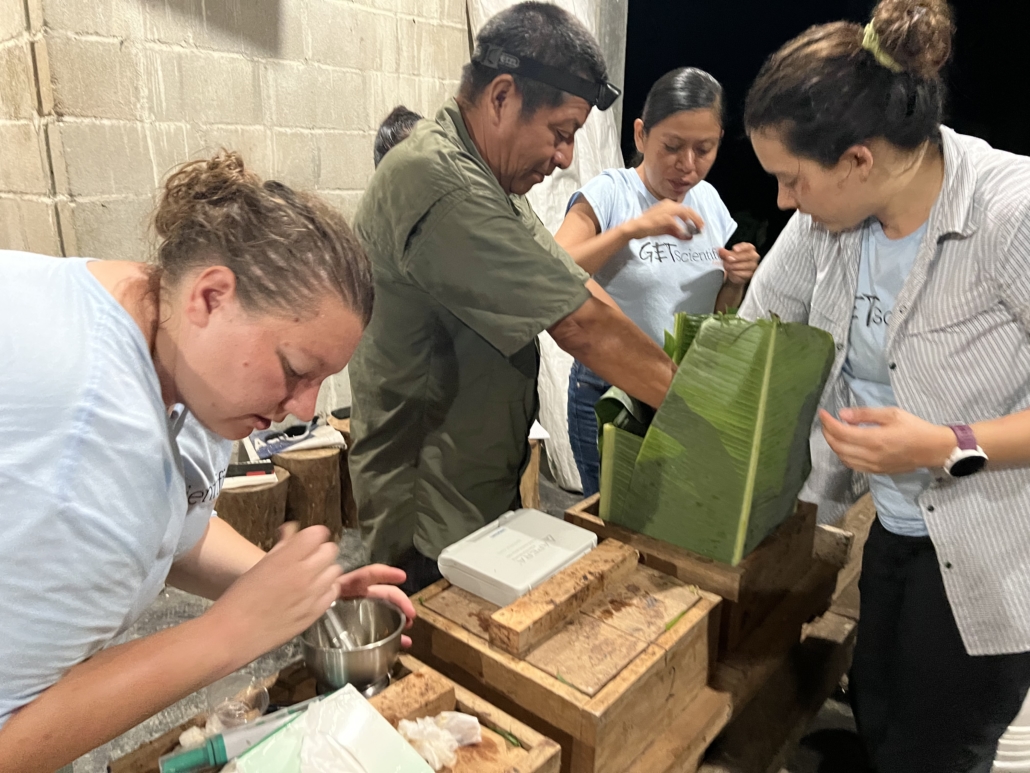
Thereafter, I taught the students our recommended methods for pod cracking and bean extraction, as well as fermentation set-up and preparation. The students were very hands-on and did not hesitate to share useful ideas and information regarding data collection during fermentation and the application and usage of instruments. The exchange between both partners was mutually beneficial for everyone involved.
The student researchers received many first-hand experiences; these include the ability to differentiate the four criollo phenotypes grown at BFREE, harvesting and extraction of cacao beans from pods and most importantly getting practical during fermentation. Additionally, as the advanced cacao fellow, I became more knowledgeable about fermentation chemistry and terminologies and was exposed to multiple lectures on basic food components relating to Food Science and its applications to cacao.
Special Thanks
Thank you to everyone from UTK who participated in making the project a success. Professors: Dr. DeWayne Shoemaker, Dr. Denita Hadziabdic-Guerry, and Dr. Kevin Moulton Student Researchers: Holly Brabazon, Celeste Chadwick, Amber Gunter, Laura Whaley, and Madison Fomich.
Introducing New Hospitality Staff at BFREE
/0 Comments/in Blog, Eco-Tourism, Educator, Non-Proft /by BFREE ContactTwo new faces greet BFREE visitors in 2023. We are happy to introduce Pedro Witz, Office and Hospitality Coordinator, and Mario Teul, Tour Guide and Educator.
(Header photo of Mario Teul with students from Kutztown University by Chris Habeck.)
Pedro Witz
Pedro Witz was born in Puerto Barrios Guatemala in 1987. Shortly after, his parents migrated to Belize where they made it a home. In 2008 Pedro graduated with an associate degree in Business Administration with concentration in Finance from the University of Belize. He began working for the Toledo Cacao Growers Association in 2008 as a Financial Controller and then moved up to Project Coordinator. In 2016 he was working directly with the cruise line in the hospitality sector where he gained much experience in the tourism industry. He then went back home where he worked five years as a secondary education teacher at the Julian Cho Technical High School. During that period Pedro obtained a Pedagogy Certificate in secondary education from Galen University.

Pedro’s interests in helping young adolescents at risk and his passion for sports has made him an inspirational and motivational figure for many youths in Toledo District. He believes all is possible and everything happens for a reason. Pedro began working for BFREE in January of 2023 and is happy to be a part of a wonderful and dynamic team who values and protects the precious wildlife of the Belizean magical tropical rainforest. He is the Office & Hospitality Coordinator, and his role is extremely important in making the stay of guests and visitors a most memorable one. Pedro takes pride in his new job.
Mario Teul
Mario was born in San Miguel Village but grew up in Blue Creek Village. He attended the Toledo Community College in Punta Gorda Town and later attended the University College of Belize (now known as the University of Belize). As a young kid, Mario spent a lot of time outdoors and fell in love with nature. His first job as a Field Biology Assistant with a conservation organization called Programme for Belize increased his love for Belize’s flora and fauna. A few years later he
was hired as a Site Supervisor for an International research, conservation, and education project based out of Wisconsin, USA in collaboration with the Belize Zoo.
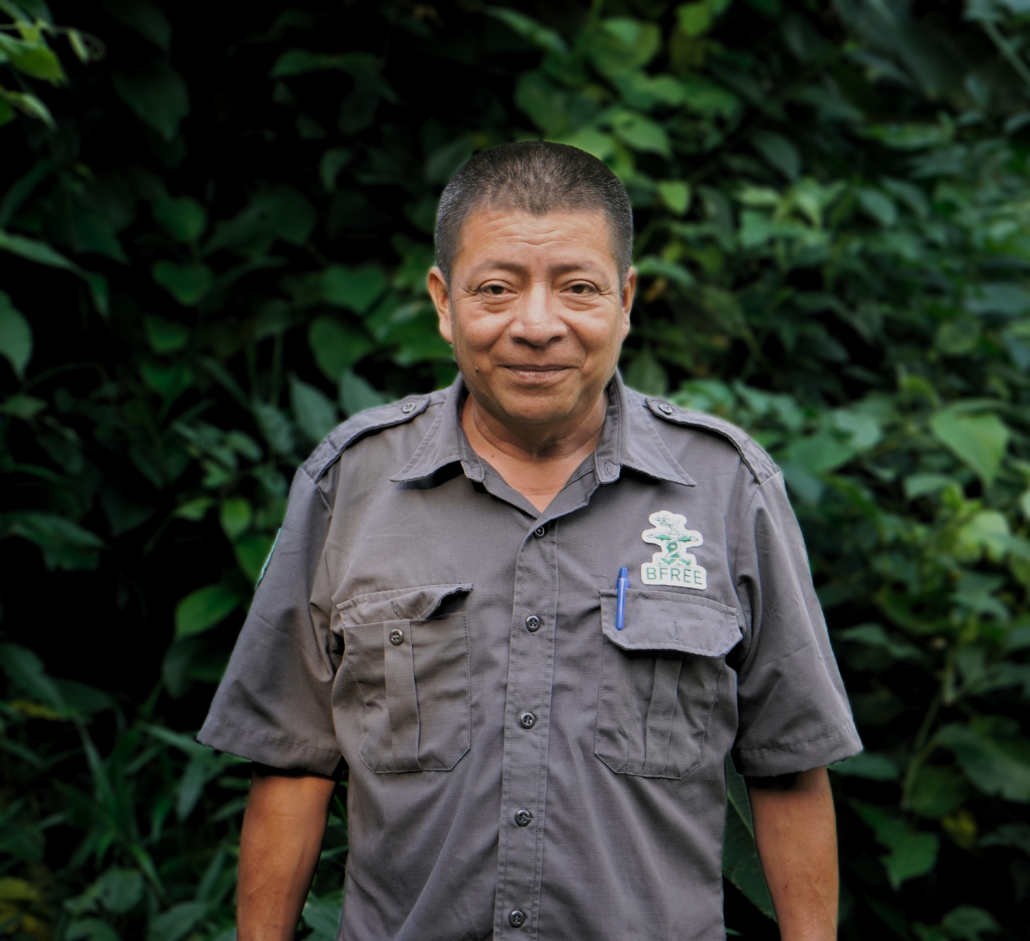
Mario taught Primary School for a few years but since nature is his passion, he quit teaching and went into full time tourism. He worked for several resorts mainly leading guided tours throughout Belize. Given his knowledge of Belize’s avifauna world, he was contracted by Belize Audubon Society to customize a Basic and an Advanced Level Birding Curriculum to teach upcoming tour guides about the Birds of Belize. Mario is currently the Tour Guide/Educator at the Belize Foundation for Research and Environmental Education located at the foothills of the beautiful Maya Mountains in Southern Belize.
BFREE Receives Porras Conservation Award
/0 Comments/in Blog, Conservation, Education, Educator, Forum, Hicatee Turtles, Non-Proft, Research, Turtle Conservation /by Darrell Robinson
It’s not often international wildlife conferences hold their annual meeting so close to home. Fortunately, the International Herpetological Symposium (IHS) chose Belize City as the base for their 42nd gathering and we are so glad they did! The International Herpetological Symposium (IHS) provides a forum for the dissemination of information and research pertaining to the natural history, conservation biology, captive management, and propagation of amphibians and reptiles. The symposium provided a valuable opportunity to showcase the herpetological conservation taking place in Belize. BFREE Staff, Jacob Marlin, Heather Barrett, Tom Pop, and Jaren Serano, attended the conference and presented on various topics. Dr. Marisa Tellez of the Crocodile Research Coalition also provided local perspective on conservation in Belize and several student presenters from southern Belize’s Independence Junior College highlighted research questions and projects pertaining to reptiles and amphibians in the country. At the close of the conference, BFREE was given the Porras Conservation Award. This award is granted in recognition of lifelong achievements in and contributions to field biology. The award is presented to a speaker (or – in this case – an organization) who has demonstrated that their work represents exceptional accomplishments in the field that benefit herpetological conservation. We are pleased and honored to have our work recognized in this way.
BFREE PRESENTATIONS AT THE 42nd IHS SYMPOSIUM
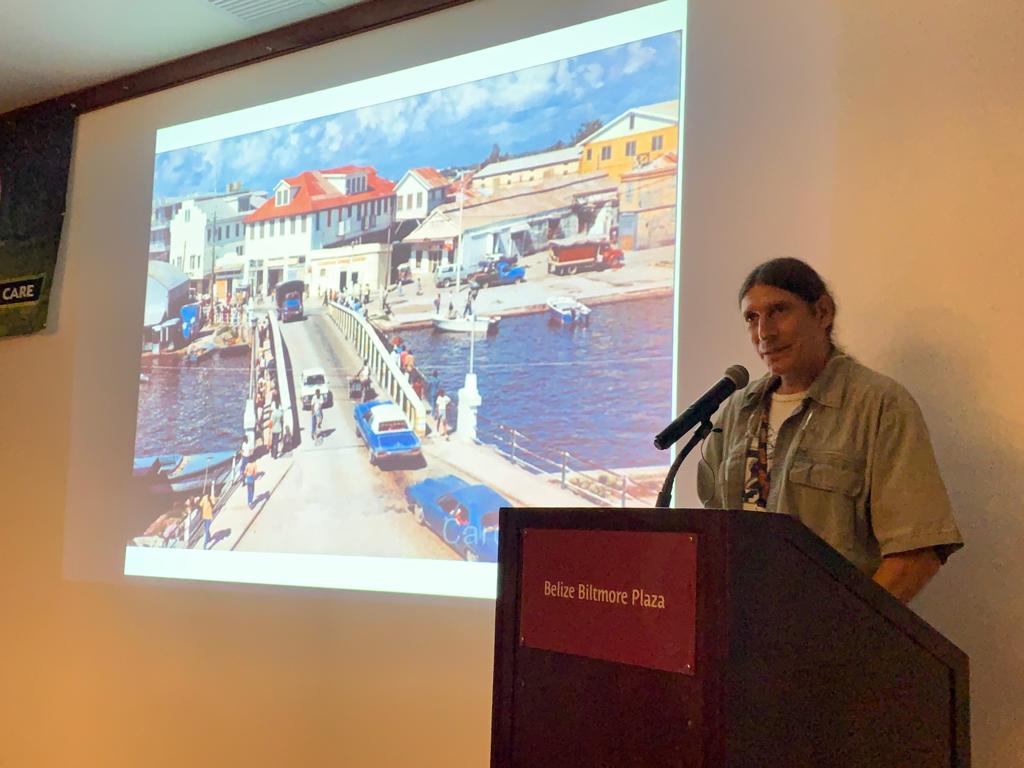
Jacob Marlin, BFREE Executive Director, provided the keynote presentation. “The Herpetofauna of Belize, 30 Years of Observations, Myths, Facts and Hot Spots”
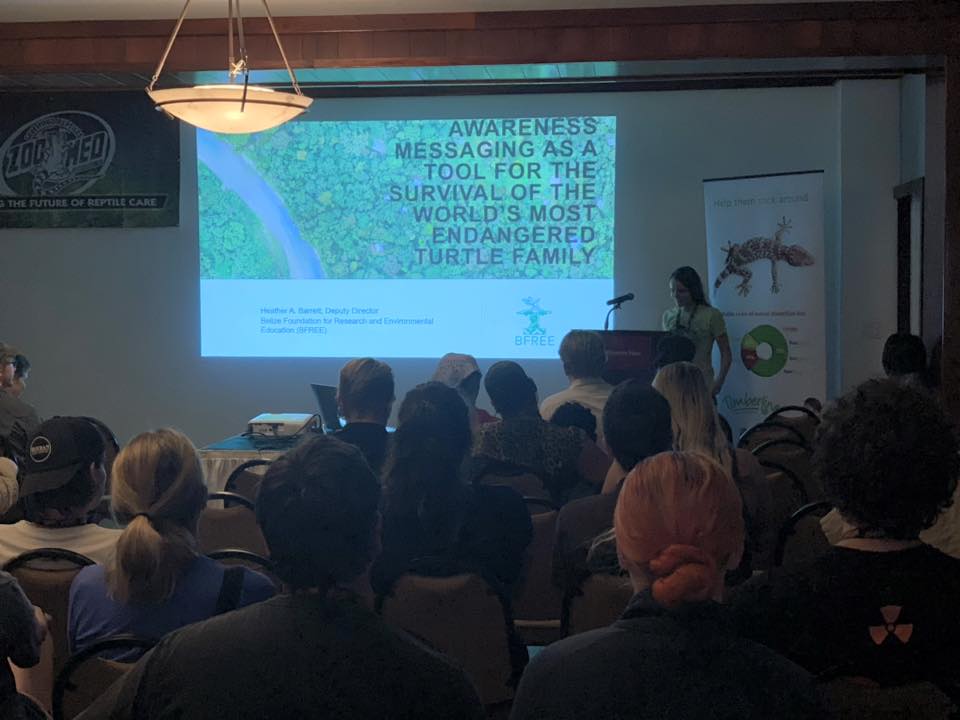
Heather Barrett, BFREE Deputy Director, presented “Awareness Messaging as a Tool for the survival of the world’s most endangered turtle family”
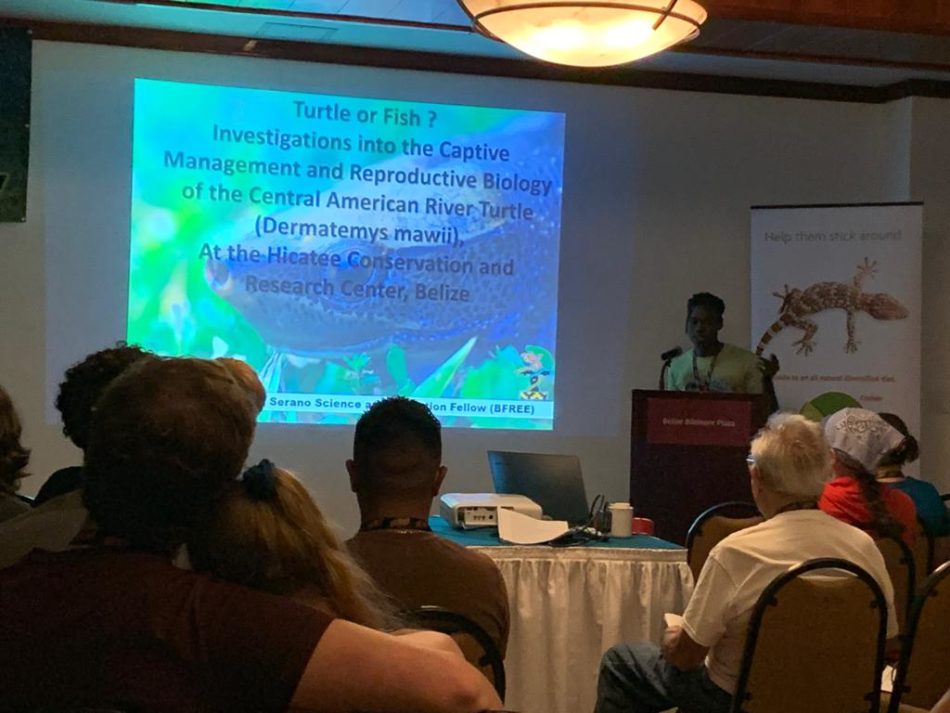
Jaren Serano, BFREE Science and Education Fellow, presented “Turtle or Fish? Investigations into captive management and reproductive biology of the Central American River Turtle (Dermatemys Mawaii), at the Hicatee Conservation and Research Center, Belize”
Can Chocolate Save the Rainforest?
/1 Comment/in agroforestry, Bird Conservation, Blog, Chocolate, Education /by Tyler Sanville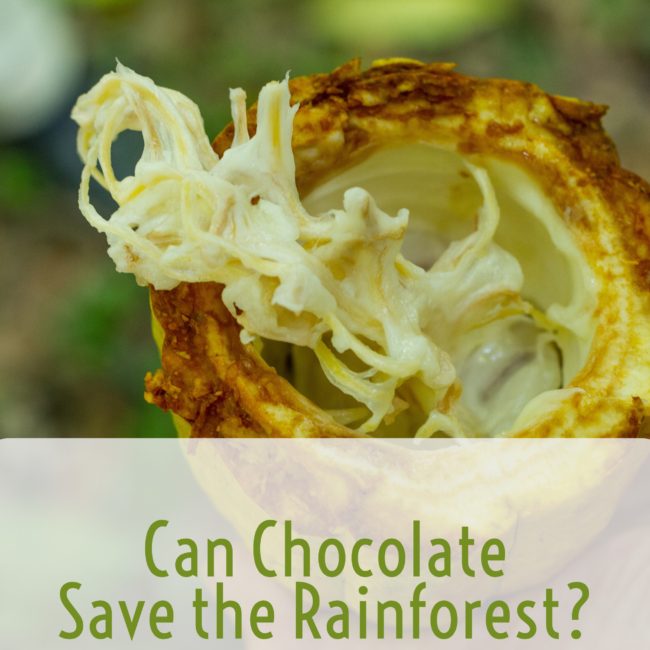 Can chocolate save the rainforest? BFREE has been exploring this question for many years, beginning when our certified organic shade-grown cacao demonstration farm was planted in 2006. Since then we have worked diligently to provide educational opportunities and support for those interested in learning more about the benefits of shade-grown cacao. We have offered workshops and training programs for local farmers which have provided Belizeans with the tools necessary to grow sustainable and successful crops. BFREE along with students of UNC Wilmington have co-produced ‘The Belize Cacao Agroforestry Handbook.‘ This handbook is a resource manual for anyone interested in growing cacao in Belize.
Can chocolate save the rainforest? BFREE has been exploring this question for many years, beginning when our certified organic shade-grown cacao demonstration farm was planted in 2006. Since then we have worked diligently to provide educational opportunities and support for those interested in learning more about the benefits of shade-grown cacao. We have offered workshops and training programs for local farmers which have provided Belizeans with the tools necessary to grow sustainable and successful crops. BFREE along with students of UNC Wilmington have co-produced ‘The Belize Cacao Agroforestry Handbook.‘ This handbook is a resource manual for anyone interested in growing cacao in Belize.
Due to its high value and its success as an understory crop, cacao is proven to be a great alternative to other forms of agriculture in the tropics which generally require clearing of tropical rainforests and heavy input of agrochemicals. Therefore, we have been promoting shade-grown cacao as a method for restoring the forest canopy and to help improve the lives of local farmers by offering higher income and healthier working environments, while also maintaining and expanding rainforests, and providing habitat for birds and other wildlife. Growing chocolate is a win-win; it’s good for the environment and can improve farmers’ livelihoods.
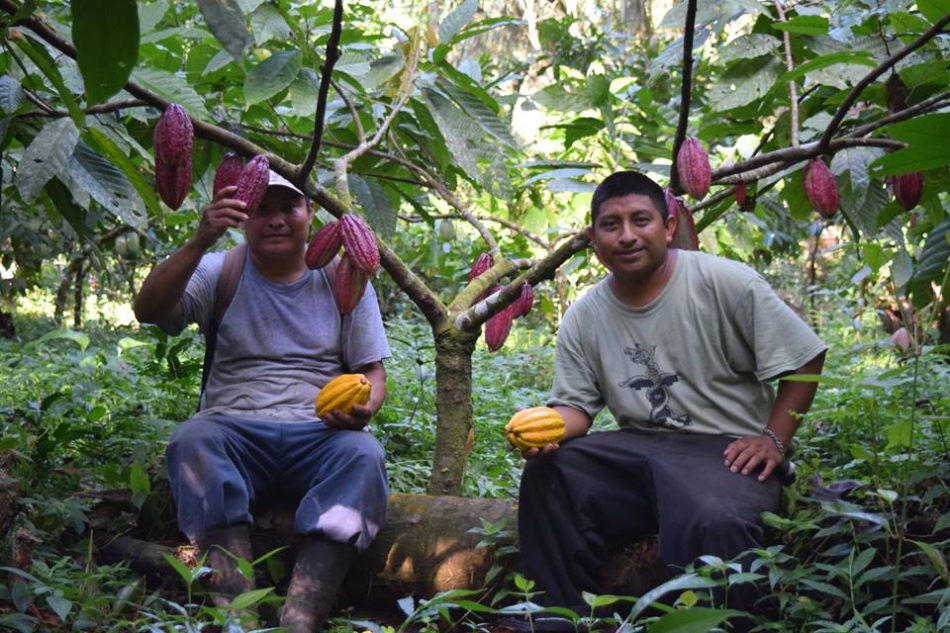
Pedro Rash and Elmer Tzalam manage BFREE’s cacao agroforest.
Cacao Pod photo credit: Graham Byers
Finalist in Wildlife Vaasa Film Festival
/0 Comments/in Bird Conservation, Blog, Education /by Tyler SanvilleBFREE’s documentary film, “Wings of Hope,” was selected as a finalist in Finland’s Wildlife Vaasa – International Nature Film Festival. Created by Emmy-award winning filmmakers, Richard and Carol Foster of Wildlife Film Productions, and produced by Carol Foster and Jacob Marlin of BFREE, the film is about the re-discovery of wild Harpy Eagles in Belize. “Wings of Hope,” is being considered for a Special Award in the category of “Best Ethnographic Film (Man & Nature)” and will be judged against 15 other finalists from countries including Ghana, Nepal, Russia, Serbia, Peru, Italy, India, Estonia and the USA.
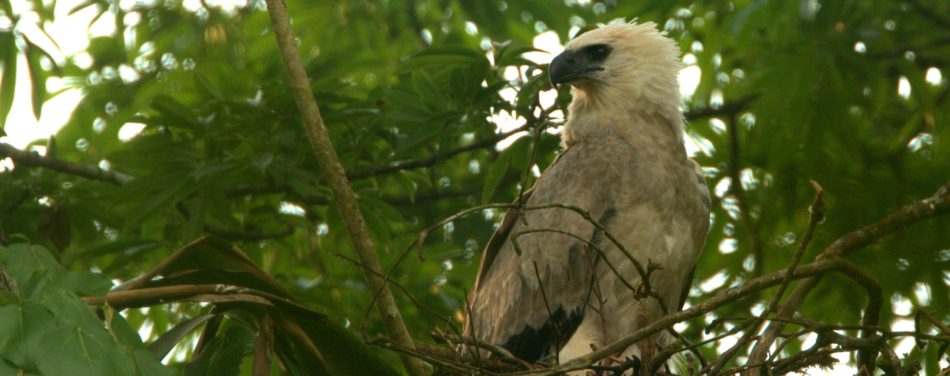
“Wings of Hope,” a documentary film about the re-discovery of wild Harpy Eagles in Belize, will be included in the Wildlife Vaasa Film Festival in Finland later this year. Photograph by Kai Reed.
This year, Vaasa Wildlife Festival received a total of 922 submissions from 83 countries, which was a new record for the festival. From that original submission, 218 films from 54 countries were selected to be shown in the festival and to compete for awards. Submissions come from film companies, TV companies, production companies, independent producers, filmmakers, festivals, TV- broadcasters and journalists, as well as from newcomers and established professionals.
About Wildlife Vaasa International Nature Film Festival
Wildlife Vaasa International Nature film festival is located on the West Coast of Finland, and has been held in the city of Vaasa every second year, since 2002. Since its conception, it has grown in stature receiving commendation from participants, delegates, media and the public world-wide. The upcoming 8th biennial edition of the festival will take place from September 28 to October 2, 2016. The competition aims to raise public awareness , as well as to participate in a global dialogue about Nature and The Environment. Therefore, only Nature and Science documentaries related to Nature and produced after 2013 were accepted in the competition. The festival’s special themes in 2016 are ENERGY & GLOBAL WARMING. Wildlife Vaasa Festival is the only film festival of its kind in Scandinavia.
About “Wings of Hope”
In 2015, BFREE released, “Wings of Hope,” a film chronicling the re-discovery of a population of wild Harpy Eagles in the Maya Mountains of southern Belize. The film details the history of the BFREE and UNC Wilmington initiative born from this discovery – the Integrated Community-based Harpy Eagle and Avian Conservation Program. This 20-minute documentary is rich with breathtaking footage of adult and juvenile Harpy Eagles and other wildlife and vistas found in the pristine tropical forests of the Bladen Nature Reserve. Over the seven year duration of the project, the Fosters followed project trainees William Garcia, Liberato Pop, Alejandro Cholum and Thomas Pop as they work to learn about and ultimately save this rare bird and its diminishing habitat.
“The story captures the essence of BFREE’s mission. I think of it as a model for integrating science, education and conservation.” Jacob Marlin, Executive Director of BFREE.
In August and September 2015, the film was shown in schools and community centers throughout the Toledo District of Belize in order to raise awareness of the significance of continuing to protect wilderness areas like the Bladen Nature Reserve and the greater Maya Mountains. Over 1,100 people were reached during those events.
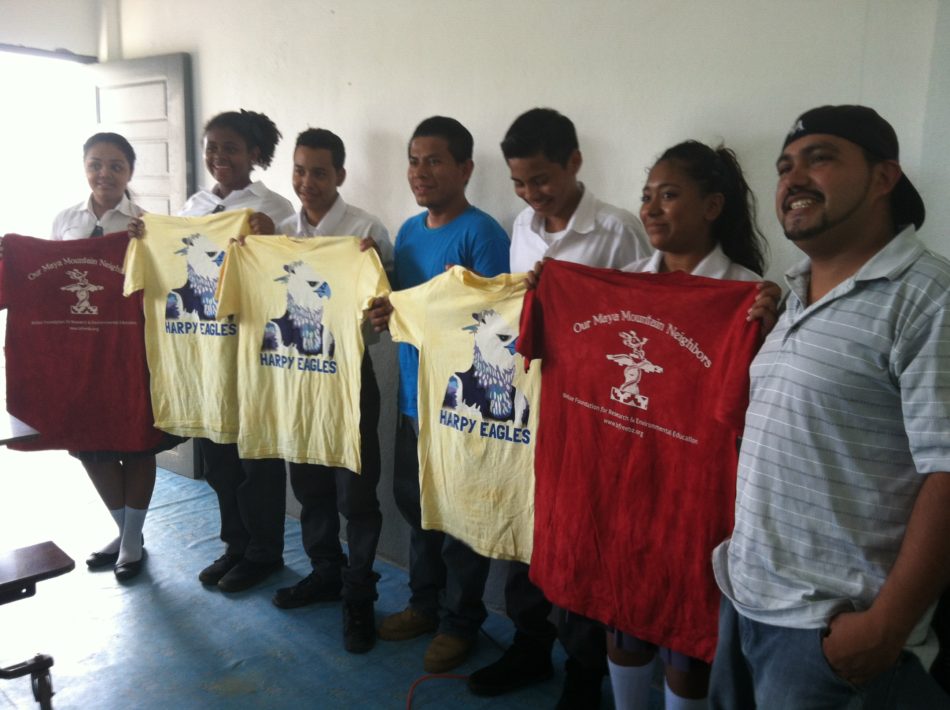
Liberato Pop (center) and William Garcia (right) pose with students at Julian Cho Technical High School after a film showing
Liberato Pop of Bladen Village was one of the project trainees and is featured throughout the film. In recent years, he has worked all over Belize doing bird research using expertise gained from his years of experience as an avian technician for the project. Mr. Pop, along with Mr. William Garcia of Trio Village, represented BFREE and answered questions about their work during film showings in 2015.
Mr. Pop says of the film, “As an Avian Technician at BFREE, I am very excited about the Harpy Eagle film and the work we have done. I think that many students and parents were interested to learn about the value of what we have in our protected areas.”
Project trainees include: Abidas Ash, Alejandro Cholum, Alan Romero, Frank Perez, Henry Perez, Liberato Pop, Macario Coy, Marlyn Cruz, Pedro Pop, Roni Florian, Sipriano Canti, Thomas Pop, William Garcia, and Wilfred Mutrie
2016 Field Courses
/0 Comments/in Blog, Education /by Tyler SanvilleBFREE hosted 210 students and instructors through our field courses this season. Groups came from the United States and from within Belize to engage in hands-on learning. While at BFREE, students were introduced to on-going conservation projects at the field station like the Hicatee Conservation and Research Center and the cacao and coffee agroforest. Some students took the opportunity to participate in the Small Mammal Community study established in 2015 and just introduced to field courses this year. They also participated in hikes and river walks to get a feel for the rainforest. For those who stayed long enough, instructors assigned independent projects in which students were tasked with developing research questions and collecting preliminary data – often presenting results on their last evening at BFREE.
When exploring other parts of Belize, students visited banana plantations, participated in cultural homestays, snorkeled at the Belize Barrier Reef, and saw wildlife up close at the Belize Zoo. See below pictures from the first half of the field season.
Visit our Flickr feed for more images!
January
“Eat Locally: Think Globally” led by Amy Treonis and Elizabeth Ransom, University of Richmond
“Biology “ led by Glenn Johnson, SUNY Potsdam
“Tropical Ecology and Conservation in Belize” led by Sara Ash, University of the Cumberlands
U of C students make friends with Golden Steam kids during their homestay. Pic provided by Sara Ash
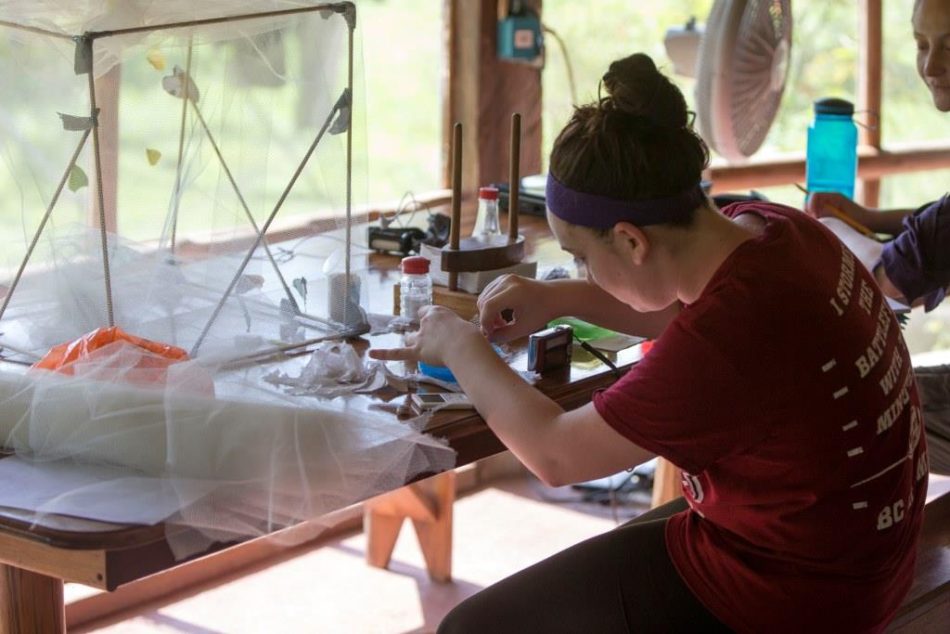
Univ of Massachusetts students implemented independent research projects. Pic by Sean Werle
“Tropical Ecology,” led by Matthew Brady, Keene High School, New Hampshire
“Tropical Biology,” led by Paul Pickhardt and Gregory Smith, Lakeland College, Wisconsin
“Tropical Biology,” led by Maarten Vohhof, Western Michigan University

